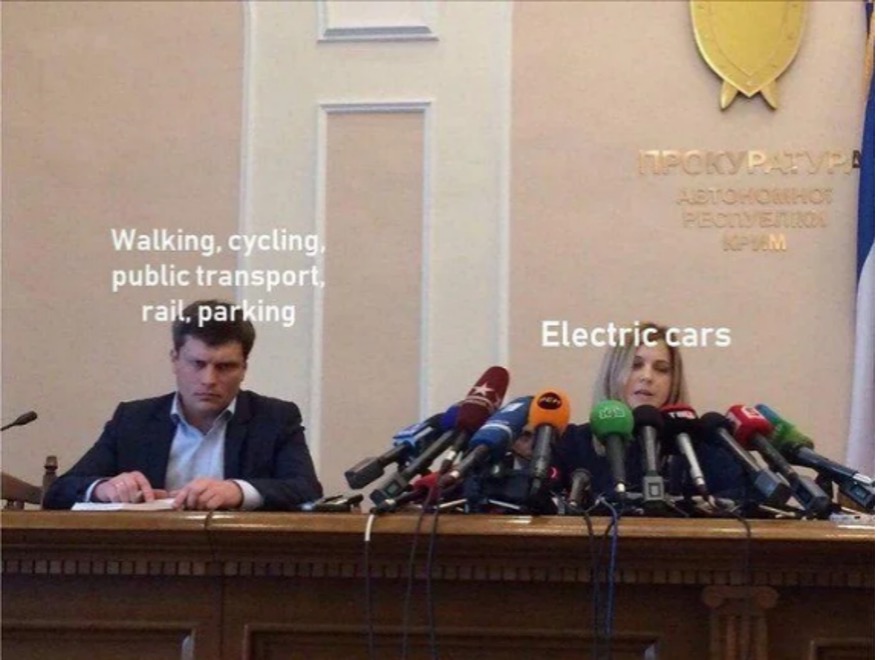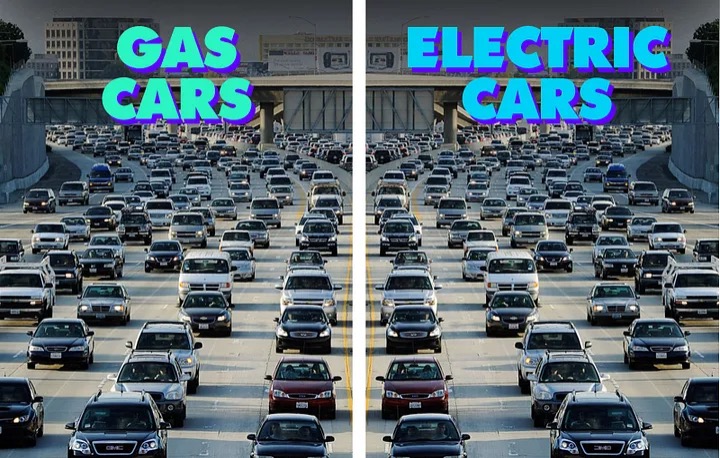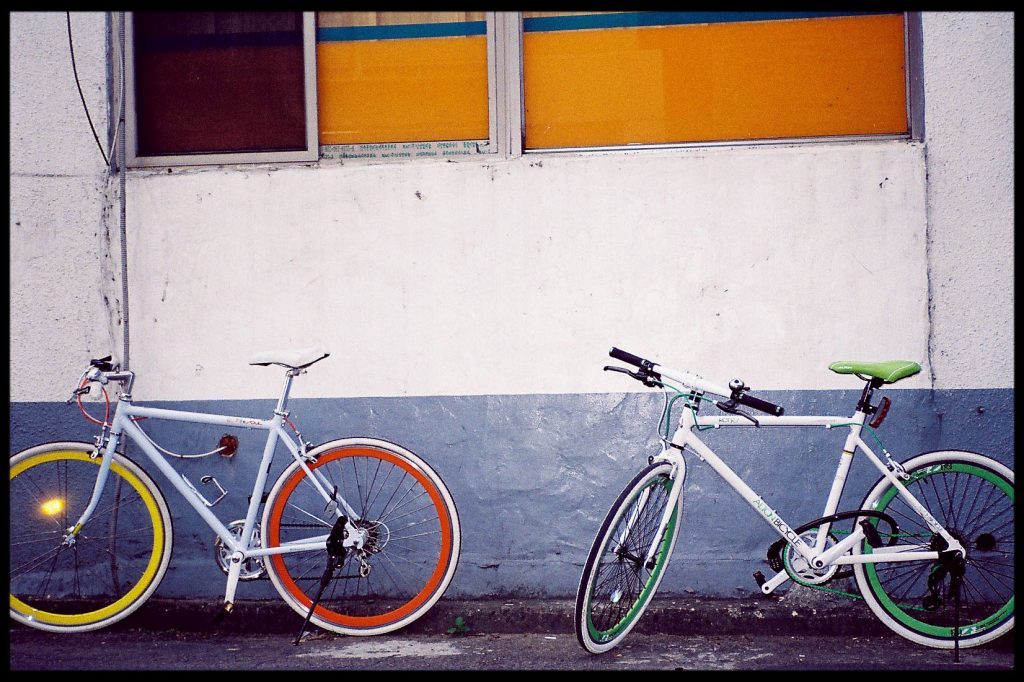Australia faces massive problems with our transport system. We have some of the most spread-out cities in the world, and huge distances between major population hubs as well. We have in turn become a car-dominated society, with public policy focused heavily on building more and more expensive and complicated road infrastructure – just look at the disaster of the Rozelle Interchange in Sydney, which cost over $3billion!
In addition to costing exorbitant amounts of money, our road system is causing major problems. It is a major factor in Australia’s greenhouse gas emissions, we are seeing increasing numbers of road deaths, and for those of us not killed on our streets, it has significant negative impacts on our communal health.
This situation is not sustainable, but what can we do to fix the problem?
An overreliance on electric vehicles
Many Governments are now recognising that transport is a growing problem for our cities, particularly in regard to climate change. Unfortunately, we are largely pursuing a solution that will just perpetuate a range of problems, while doing little to fix the core issues behind our transport problems – electric vehicles.
In my hometown of Canberra, for example, ‘climate’ policy around transport focuses almost entirely on the promotion of electric vehicles. When it comes to climate change it is assumed that all we need to do is swap like-for-like – get rid of internal combustion engine (ICE) vehicles with EVs and we’re all sweet. The ACT Government has announced a ban on the sale of new ICE vehicles in 2035, which is a good thing. It is also offering generous incentives for people and businesses to buy EVs, including: providing stamp duty exemptions for new EVs; two years free registration until 30 June 2024; discounted registration on ZEVs and other low emissions vehicles from 1 July 2024 and zero interest loans for up to $15,000 for ZEVs and charging infrastructure under the Sustainable Household Scheme.
It is not just the ACT that are heading in this direction. Across the country, significant investment is being put into a transition to EVs. The federal Government has released a national EV strategy (which omitted other electric vehicles such as e-bikes), while campaigners (promoted by the Greens) recently won a court case that blocked the Victorian Government from charging EV users for their use of the roads.

For full disclosure, I am one of the few who are lucky enough to own an EV (which I bought with my two partners), and I believe they are of course better than their Internal Combustion Engine (ICE) counterparts. Cars will continue to play a role in our future, and in this scenario, EVs are the best option available. Yet, we cannot just look to EVs to be the solution for our climate, our planet, or our transport issues in Australia.
There are multiple issues with focusing on EVs. First and foremost, the process of transitioning to EVs will take far too long and cost too much for individuals and the community. The ACT, for example, is currently the leader in EV uptake. Despite this, there are still only 6,500 battery EVs on the ACT register, representing under 2% of light vehicles. Even after the ban on the purchasing of new ICE vehicles in 2035, it will take at least another decade or more for all ICE vehicles to be off Canberra roads. Canberra has a target of achieving net zero emissions by 2045, although we need to be cutting emissions sooner than that – we simply can’t wait this long to get ICE vehicles off the road.
The problems however extend beyond transition time. Like ICE vehicles, EVs still involve investing huge amounts of energy and resources. While significantly cleaner than ICE vehicles, research has found that EVs still produce high levels of carbon emissions, particularly in the production phase. EVs are also extremely expensive, particularly during the inequality crisis we are facing at the moment. They are realistically only an option for the middle and upper class, once again leaving out working class people from a just climate transition.
EVs also present the same problems as their traditional ICE counterparts – including impacting people’s health, creating congestion on the roads, and requiring huge amounts of space for parking, storage, and the construction of roads. We are now also facing a problem that cars, including EVs, are also getting bigger and heavier. The traditional ‘passenger’ car segment now represents just one-fifth of new vehicles sold in Australia — only 203,000 out of just over a million light vehicles sold in 2022. Instead, SUVs, and increasingly large SUVs such as the ‘Raptor’ and ‘RAM’ are dominating the car market. These cars are promoted as being safer than their traditional, smaller, equivalents (which may be true for those inside, but definitely not those outside the car). They are marketed heavily as ‘lifestyle’ vehicles, with campaigns that particularly target men encouraging them to purchase these cars to maintain their sense of rugged masculinity. This has become particularly relevant as we have become increasingly urbanised, with these cars providing a sense of masculinity and connection/domination of the environment that some feel they have lost. Large cars such as these don’t just take up more precious space, but are also more dangerous on our roads. The United States for example is seeing an epidemic of children being seriously injured or killed by huge cars, often by their own parents who don’t see them in the driveway.

Government programs to promote EVs do not address these many other climate and environmental harms created by excessive private vehicle use – diversion of public funds, creation of more and more vehicle infrastructure, misallocation of resources, particulate pollution, urban degradation, public health and safety risks, trauma services, road congestion, and encouraging (or forcing) people to drive. EVs are, fundamentally, an unjust way to address climate change. In turn, we cannot rely on them as our solution to a broader transport problem.
It’s worth noting here, that there is a strong lobby that is even opposing changes that encourage EV uptake. The Australian car lobby, for example, have been undertaking intense lobbying to limit proposals that reduce emissions from vehicles, and in turn to downplay the role of electric vehicles. This has led to led to some EV companies officially leaving the Federal Chamber of Automotive Industries (while this is a good move, it’s worth remembering that these car companies are only doing so to protect their own bottom line). This lobbying crusade has intensified with the Government’s recently announced vehicle emissions standards. We are facing a strong body that just wants to keep the status quo, no matter what!
The real solution – bikes, busses, trains and feet (amongst others)
When I’ve raised such concerns with electric vehicle advocates in recent years I’ve been met with a question of ‘what’s the alternative?’ Many EV advocates have bought into the myth that Australia is inherently a car-based country and that in turn EVs, even if not ideal, are really the only solution available to us. I’ve also been told that reducing emissions is the key, and possibly, only priority at the moment. Apparently EVs are the ‘low hanging fruit’ to achieve this. To this, I say rubbish!
There is an obvious alternative to an EV-based future – and that is one based in public and active transport. Public and active transport are often downplayed in public debates about transport options. This is driven by a belief that cars are the best, and often, only way that people can get around a city safely, quickly, and easily. This has of course been driven by effective advertising campaigns by car companies, as well as concerted efforts from car lobbies to undermine public and active transport investment. It also intersects with the colonial and racialised logics that underpin so-called Australia as a nation-state, which are based in a belief in individualism, and the ability and desirability of people to manage and control our environment. Cars are amazing symbols for such an ideology.
We need, however, to challenge these assumptions. The benefits of these two modes are obvious. First, they both produce far fewer emissions, particularly as we electrify our public transport fleets. This is particularly true for active travel. Comparing the life cycle of each travel mode and taking into account the carbon generated from making a vehicle, fuelling it, and disposing of it, emissions from cycling can be more than 30 times lower for each trip than driving an ICE vehicle and about ten times lower than driving an EV. That is a big difference.
Public and active transport also offer a swathe of other benefits. These modes of transport take up less space, they are significantly cheaper, which is essential in the inequality crisis we are facing, and they are also better for us. Cycling, for example, can help to protect from serious diseases such as stroke, heart attack, some cancers, depression, diabetes and arthritis.
Active and public transport also builds community. Cars are inherently individualistic and isolating pieces of technology – you get into your own square box and are encouraged to think about yourself not just as competing against others in their square boxes, but even more so against those who aren’t in these square boxes. In turn we see ongoing evidence of road rage in all our cities. I even feel this myself when I get behind the wheel – a sudden anger and frustration at others I cannot explain.
Active and public travel is the opposite of this. Hopping on a tram or bus or train you are suddenly sharing a transport mode with others, all coming together to get to the same place at the same time. It promotes a sense of communal, rather than privatised spaces. This obviously requires a change in our thinking, as it goes strongly against the individualised nature of our society. However, it is an approach we should promote and celebrate, rather than one we should shy away from.
We find this even more when it comes to active travel. Active travel such as walking, riding and rolling, does wonders for our community. At my job in Pedal Power in Canberra, for example, we support a range of cycling-based activities that build community. In the suburb of Lyneham, for example, local community members are now running a weekly ‘bike bus’, in which families join together so kids can ride to school safely together. It not only gives kids a safe way to get to school, but also builds connections between families in the area. One of our members also uses his bike to run a regular ‘daytime’ club. He and friends bring portable speakers on their bikes to a local park, giving people the change to have a daytime boogie.
Similar campaigns are happening in other parts of Australia too. In NSW the Better Streets campaign is bringing organisations together to push Governments to rethink what our streets can and should look like. They are doing a great job of re-imagining our streetscapes, arguing they should be designed for people first, and cars second. I’ve also been inspired by the local group, Active Travel 4 Annerley, which is pushing for a safety upgrade along Annerley Road in Brisbane, including the construction of separated cycle lanes, the reduction of speeds, and fixing and adding pedestrian crossings. Local campaigns such as these bring community together around improving their local streetscapes, and do so often with great support.
People, and Governments, know these benefits. Back in my home town of Canberra, for example, the Government has written eloquently about the benefits of active travel – both in ministerial statements and in a finalised active travel plan. We are even gaining support from unusual quarters. In my first months working at Pedal Power, for example, we released a report promoting cycling with the NRMA – something that was likely unheard of even a few years ago!
Yet, when it comes to actual implementation they are often lacking – still funnelling hundreds of millions of dollars into road duplications, while active travel projects are taking forever to complete. While saying the right things, the Government isn’t following through – often acting scared in the face of a small amount of backlash online.
But change is possible, and global cities are showing us how it can be done.
Let’s look at Paris, for example. Over the past twenty years the city has transformed from being on the most car-dominated places in Europe, to being a haven for bikes, scooters and more. This has been led by the mass construction of separated bike lanes in the city, with there now being over 240 kilometres worth of lanes. The city has closed 100 streets for cars (or opened them to cyclists and pedestrians), including many roads directly outside schools and a major road that once travelled directly next to the River Seine.
There is more! The city has recently voted to triple parking charges for heavy SUVs, discouraging their use. The Government has introduced a low emissions zone, and is planning a ban on through traffic in the city centre. They’re also looking at plans to redesign the famous Champs-Elysées to make it far more pedestrian friendly.
The results have been staggering. Trips by bike have skyrocketed – with daily bike trips likely surpassing 400,000 – 1 for every 5 inhabitants – in October 2020. Meanwhile, a significant investment bus corridors, tramways and the subway has resulted in a jump of patronage by at least 40 per cent since 2001. Car trips have naturally declined as well – with a recorded drop by almost 60 percent between 2002 and 2018. With this, car crashes have been reduced, and pollution has fallen as well. In short, this has been a massive success!
Paris is not the only one leading this charge. From London (championed initially by Boris Johnson), to Wellington and New York, many global cities are recognised that being congested by cars is not ideal and are trying to do something about it! Some of the results are astounding. In the ACT for example, it took 18 months for the Government to finalise its active travel plan – a document that ended up more as wish list than actual plan. In the same time period, Seville, in Spain, constructed 80kms of separated cycling infrastructure. Their cycling rates jumped from approximately 0% to 10% – with all the massive benefits that come with that.
We can do this. Australia is now lagging behind huge parts of the world. While good things are happening in parts of Sydney and Melbourne, we can, and need to do much more. The future is not EVs, or cars in general – it is busses, bikes, trams, trains, wheels and people’s feet. It is essential we do this – not just for our planet, but for our community.
Dr Simon Copland is the Executive Director of Pedal Power ACT, Canberra’s oldest and largest cycling organisation. In his role Copland is advocating for a mass increase in investment in cycling infrastructure in the ACT. Simon completed his PhD in Sociology at the Australian National University (ANU), studying online men’s rights groups and communities ‘manosphere’. He has research expertise in masculinity, the far-right, online hate, and digital media platforms. He has a Masters in Science Communication.
Image credit. Bicycles by Michael McLean (2011) CC BY-ND 2.0 DEED.

